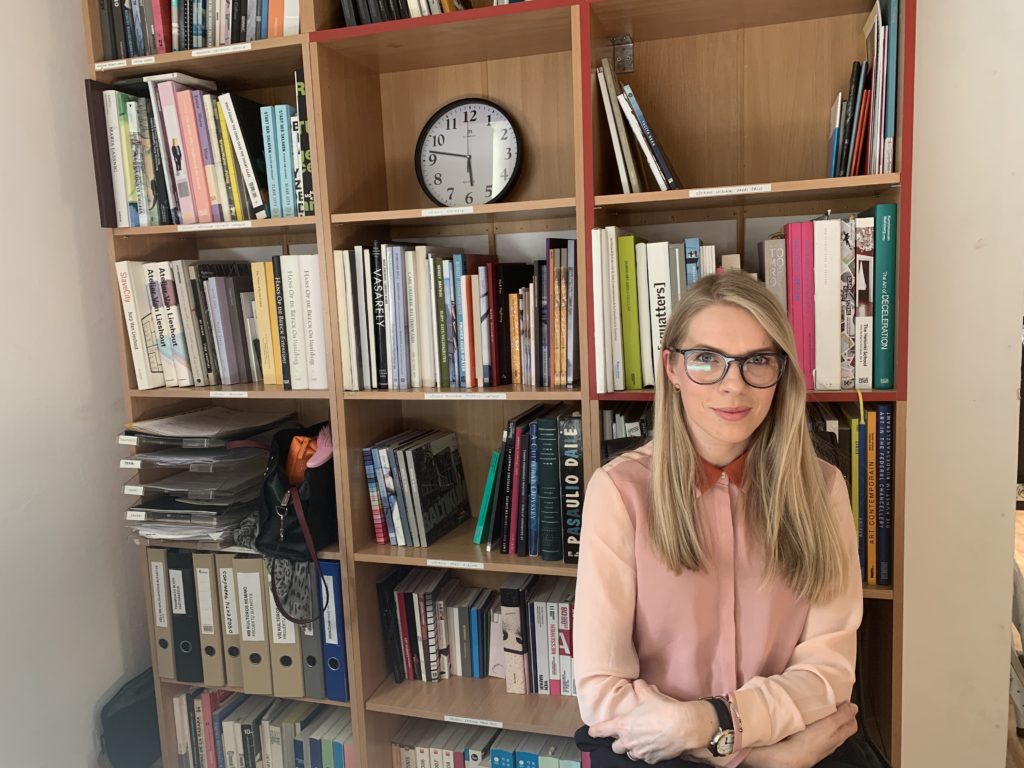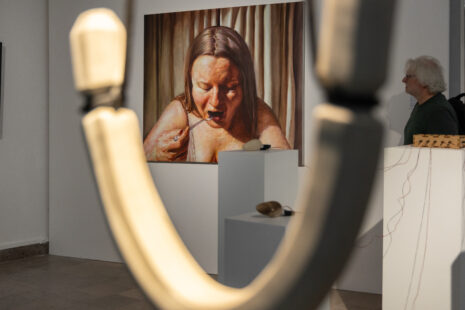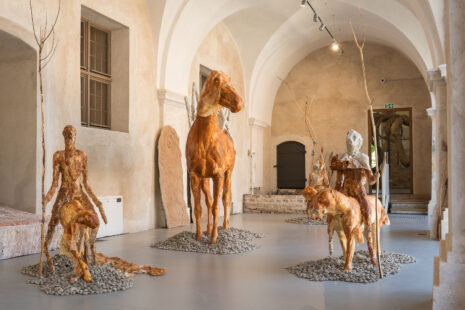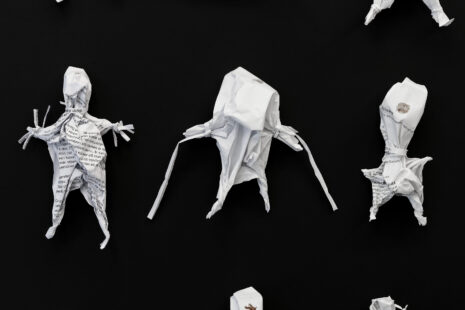Vartai is the oldest private gallery in Lithuania, founded in 1991, just a year after Lithuania regained independence. The gallery has played a vital role in the country’s cultural life ever since. Toma Monginė, director of Vartai shares her thoughts about the gallery, Lithuanian art scene and suggests her favourite spots for art in the country.
Toma, please explain why is Vartai gallery so special?
Vartai was established in 1991 right after Lithuania regained its independence. During that time there were no other culture centres, therefore the gallery was the main location not just for the art exhibitions, it was also an important venue for all cultural events from concerts to literature evenings, even ambassadors organized their official events here. Eventually in 2006 we started moving to the contemporary art direction and we’ve focused on it for the last 13 yers. In 2009 we represented Lithuania at the 53rd Venice biennale. We work with different medias, starting with painting, installation, video arts, photography and we cooperate with several artists, who we have agreements with and we support their growth. Even though we represent just the local artists, we aim to build up more international list.
The program of the gallery is planned at least a year ahead and it is based not only on presenting the works of the artists of the gallery, but also on bringing and presenting internationally recognized emerging and established names. One of the partners of the gallery lives in Germany, therefore international relations are a bit easier for our gallery.
How would you describe the overall sate of contemporary art in Lithuania?
Speaking from a private gallery perspective, the contemporary art market is just in the development stage therefore collaboration between galleries and institutions is very important. Unfortunately, there is lack of institutional collaboration in Lithuania – we are more into competing than cooperation. Looking from the world’s perspective, gallery should act as a mediator between the artist and the institution (or the collector) – however here this model does not work yet, I guess some time has to pass.
How would you describe Adomas Danusevičius’ exhibition “Mud and Flowers” just opened in Vartai?
Adomas is very talented artist with a bright future ahead. His paintings and ceramics do not just represent his inner feelings visually, but through his artwork he speaks about socially engaged sensitive topics in a very tender and sophisticated manner. Every art piece is an object of research which merges with artist’s sensual experiences. That sensuality evokes and touches each viewer in a very individual way.
What is Vartai’s main focus?
Vartai is one of the oldest and the biggest private gallery, not only Vilnius but also in Baltic countries. For many years, the gallery played a major educational role by presenting not only Lithuanian artists, but also organizing exhibitions of internationally recognized artists. A great example of it is an international project Artscape during which we hosted number of internationally acclaimed artists, amongst them Hans Op de Beeck, Jesper Just, Atelier Van Lieshout, Franz West and Erwin Wurm and many others.
The gallery supports its artists and works closely with them by presenting their artworks at the exhibitions in Lithuania and abroad, at international art fairs such as Viennacontemporary, Art Cologne, Artissima, Art Brussels, Code Art and etc., also for private collections and institutions, as well as organizing variously events in Lithuania and abroad.
How are Vartai projects funded?
More than a half projects are partially funded by the goverment. However, as the application process for the projects announced by Lithuanian Council for Culture is in every six months, from a strategic perspective it’s very hard to plan the program ahead. Also, funding is given for a specific project, meaning there is lack of flexibility in gallery’s programming especially when it comes to the international exhibitions or presenting artists at the international art fairs. For example, even if a very important exhibition is planned in detail or if we get accepted to the prestigious international fair, this does not guarantee the implementation of a project. Of course it strongly affects planning the activities and not in a good way as sometimes the most important projects have to be cancelled due to the lack of government support.
How are things with private funding in Lithuania?
The majority of funding still comes from government, however there is a hope that things are about to change. The interest and awareness about art is raising and of course such events as opening of Mo museum have a positive influence. Our role as a private gallery is to help Lithuanian art market to develop and to grow, so of course one of the missions is to attract private funding sources in order the support the growth and visibility of Lithuanian artists in the local art scene and also abroad.
The biggest art fair in our region is ArtVilnius taking place in the summer, why Vartai is not participating?
So far ArtVilnius fair is focusing more on the numbers of participants, but not on the quality. It has a wide range of art and therefore in a way it lacks the clear focus. Lithuania is still in a very young stage in creating an art market and in our opinion the fair should help, but not mislead development process of our art market.
If the art fair as such should take place in the Baltic region, then first of all it should be more selective, secondly, it should clearly define what type of art is presented there, as now it gives a misleading assumption about contemporary art. Vartai has been working in contemporary art field for many years, therefore we feel responsible for the artists we represent and for the audience we focus on to avoid misleading presentation, which brings us to the decision not to take part in ArtVilnius.
What galleries would you suggest people to hop in, when visiting Lithuania?
Starting with institutional spaces, MO is a hotspot now and this kind of museum was long expected, even though there are so many different opinions about it. Also, National Gallery of Art, Contemporary Art Center and Rupert – a center for Art and Education. Talking about galleries, AV17 in Vilnius, Meno Parkas in Kaunas are those working with a clear direction and have interesting exhibition programs. Artifex – a small textile gallery in Vilnius is always worth a visit. Also, Editorial project space and Contour gallery – which is working with a small list of artists by exhibiting their works in various selected venues.









